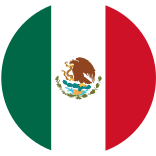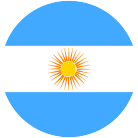Easter Across Latin America: Vibrant Traditions and Spiritual Journeys
- Latino Foods
- Mar 21, 2024
- 2 min read
How Latinos Celebrate Easter?
Easter, or "Holy Week", or Semana Santa as it's known in many Latin American countries, is a time of deep religious and vibrant traditions. Each country, with its unique customs and celebrations, offers a different way of commemorating this holy period. Let's discover how Easter is celebrated in some latino countries...

Mexico: A Blend of Solemnity and Celebration
In Mexico, Easter is a fusion of Catholic traditions and indigenous customs. The most notable events are the passion plays, especially the famous one in Iztapalapa, Mexico City, which reenacts the crucifixion of Christ. Communities come together for "Procesiones de Silencio" (Silent Processions) on Good Friday, showcasing deep devotion and reverence. Meanwhile, "Judas burning," where effigies of Judas Iscariot are burned, adds a unique cultural twist to the Easter celebrations.

Brazil: Colorful Processions and "Sábado de Aleluia"
Brazil's Easter celebrations are marked by the "Procissão do Encontro" (Procession of the Encounter), where statues of Mary and Jesus are carried through the streets until they meet, symbolizing the reunion of Jesus with his mother after his resurrection. "Sábado de Aleluia" or Holy Saturday is celebrated with "Malhação de Judas," where straw dolls representing Judas are beaten and burned. Easter in Brazil is also known for its delicious chocolate eggs and "pão de queijo" (cheese bread), enjoyed throughout the holiday.

Colombia: Religious Devotion and "Holy Week" in Popayán
Colombia's most emblematic Easter celebration takes place in Popayán, known for its processions declared a Masterpiece of the Oral and Intangible Heritage of Humanity by UNESCO. The city's streets are filled with solemn parades featuring statues of saints and scenes from the bible, carried by "cargueros" on their shoulders, against the backdrop of colonial architecture and candlelit vigils.

Argentina: Reflection and Traditional Foods
Argentina observes Easter with a strong emphasis on family gatherings and religious reflexion. "Viacrucis" (Way of the Cross) reenactments are common. Culinary traditions play a significant role, with "empanadas de vigilia" (fish empanadas), "rosca de pascua" (Easter cake), and "humita" (a dish made from corn) being staples at the Easter table.

Chile: "Cuasimodo Sunday"
While Easter in Chile follows many of the traditional Catholic customs, including mass and processions, the week after Easter, known as "Cuasimodo Sunday" is particularly unique. It involves a colorful parade where priests, accompanied by locals on horseback, bicycles, and cars, bring communion to the sick and elderly who couldn't attend the Holy Week services.

Peru: "Holy Week" in Ayacucho
Peru's most famous Easter celebration takes place in Ayacucho, featuring processions, masses, and musical events throughout Holy Week. The "Señor de los Temblores" (Lord of the Earthquakes) procession is a highlight, with a revered image of Christ paraded around, believed to protect the city from earthquakes. Artisan fairs, folk music, and dance performances add to the festive atmosphere.
Easter in these Latin American countries showcases a rich tapestry of traditions that blend religious solemnity with cultural festivities. From Mexico's passion plays to Brazil's colorful processions and Argentina's family-centric celebrations, each country brings its own unique flavor to the observance of Semana Santa, reflecting the deep spiritual roots and vibrant cultures of the Latin American people.
What are your country's traditions for easter time?
Happy Easter!
Thanks for reading,
-Latino Foods Team.







Comentários